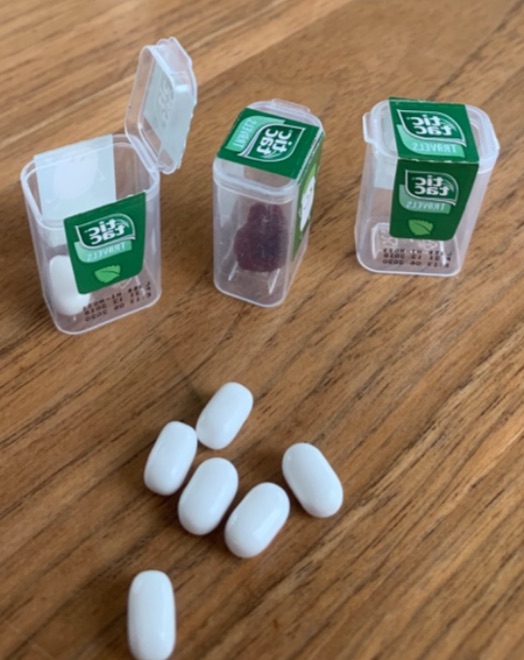A mindfulness exercise that helps us to take the stance of not-knowing and to recognize how quickly we let ourselves be guided by our first impression. With this bias we often miss the chance to explore alternatives and thus leave even much better solutions uncovered.
In this mindfulness exercise, participants are invited to examine an object with their eyes closed, so they rely on all other senses. Due to the strong smell of a tic-tac mini box, the participants are tempted to come to the wrong conclusion “too quickly” and mistake the object for a tic-tac. So they stop exploring and miss the correct solution.
Material
- Tic-tac minis – one box per participant (available e.g. here).
- Raisins, cranberries, goji berries, nuts (watch out for allergies!), chocolate raisins or similar to fill the Tic-tac box

Preparation
Remove tic-tac from box and fill with an alternative, cover the boxes, so participants can’t see objects.
Have participants take a seat, invite them to close eyes
Facilitation
- Introduce exercise, ask participants to close eyes, open one hand and be fully in the moment.
- Hand out tic-tac boxes
- Instruct to examine the object received (with eyes closed) by using all remaining senses (“How does it smell, how does it feel, what can you hear, etc.?”)
- After some time, resolve that it is a box that can be opened – and that it contains another object
- Now let them take out the object – still with eyes closed
- Continue to be in the moment – and curiously explore, using all other senses
- Ask the participants to observe the mind as well, how the thoughts change in addition to the changed perception
- Now the object may be put in the mouth, first as a small bite, then as a whole.
- Then explore with the mouth (whoever wants to) – but do not chew yet!
- Continuously invite to observe thoughts (“what changes?”).
- Continue to explore the objects in the mouth (“how does the taste change?, the consistency etc.”).
- Finally, chew. And then later also swallow, while continuing to observe.
Reflection
- Invite participants to share experiences.
- “How was it to notice how quickly the mind makes a (seemingly correct) categorization? Does this happen in everyday life, too”?
- Do NOT reveal that different objects have been examined by the participants. This is a nice insight you might reveal at the end If the group is not finding it out for itself
- State how simply everyone is taking its own reality to be also the reality of the others – although its not
Further insights
- First impression (“Aha, tic-tac!”) – is wrong, although one is absolutely sure to “know” that.
- Real surprise that something else is in the box – although the smell is overwhelmingly clear!
- Resistance and insecurity to put something in the mouth, which is not known and which one is not able to see with the primary sense. (Good opportunity to refer to trust levels, too)
The exercise and the findings from the reflection can be used for an exchange about perception, hasty conclusions, uncertainty, curiosity and trust and thus serve as an easy entry into a discussion about the posture of not-knowing.
What becomes possible for us as Scrum Masters, Agile Coaches, Product Owners or Agile leaders if we remain longer in the posture of not-knowing without jumping to conclusions too fast?
Which other experiences have you had with this exercise? Please share in the comments!
WYTIWYG ist inspired by Eric McCollums exercise “Eat just one raisin” published in Nelson (2012), Education and Training in Solution Focused Brief Therapy; Haworth Press, New York.
